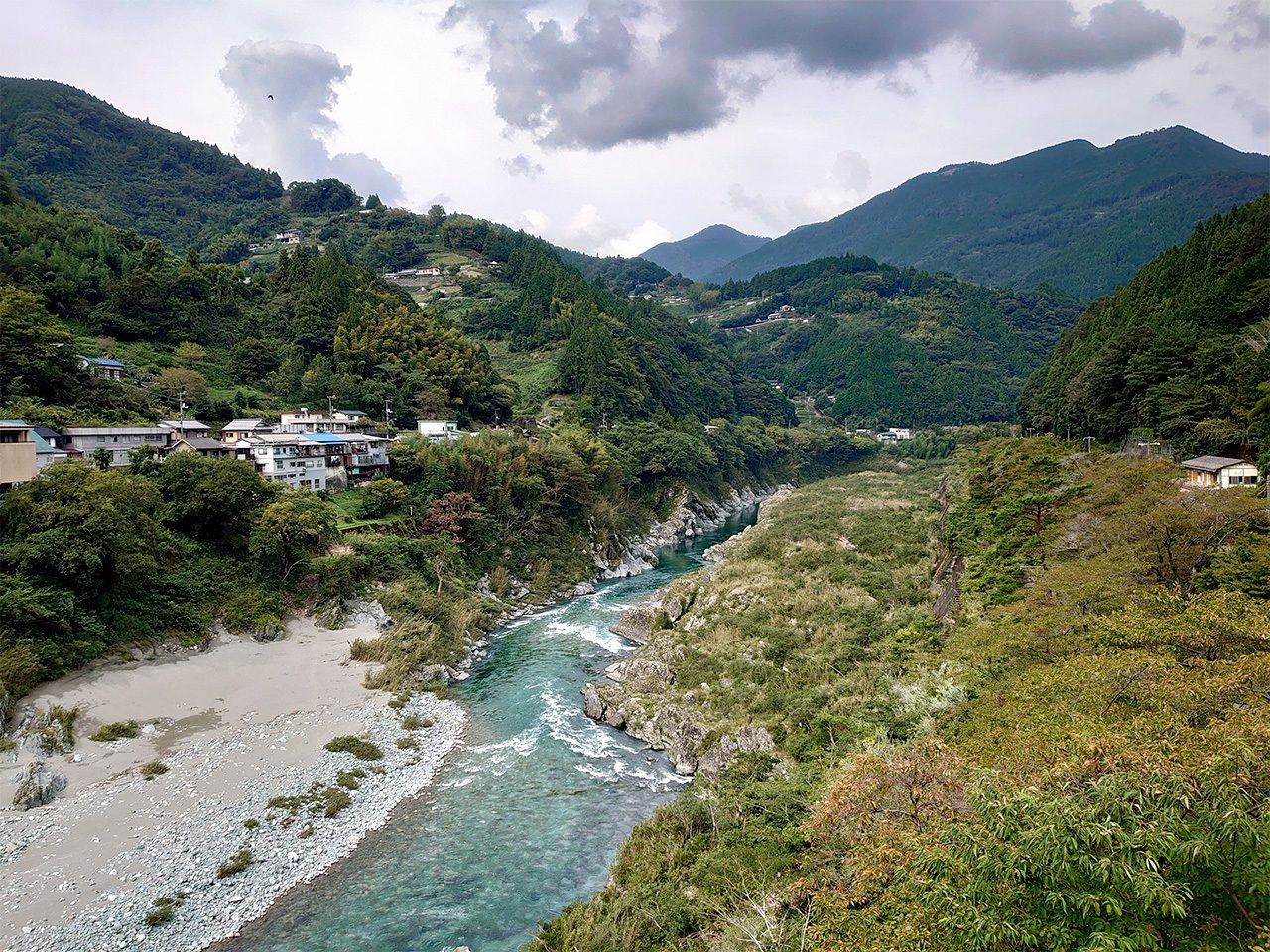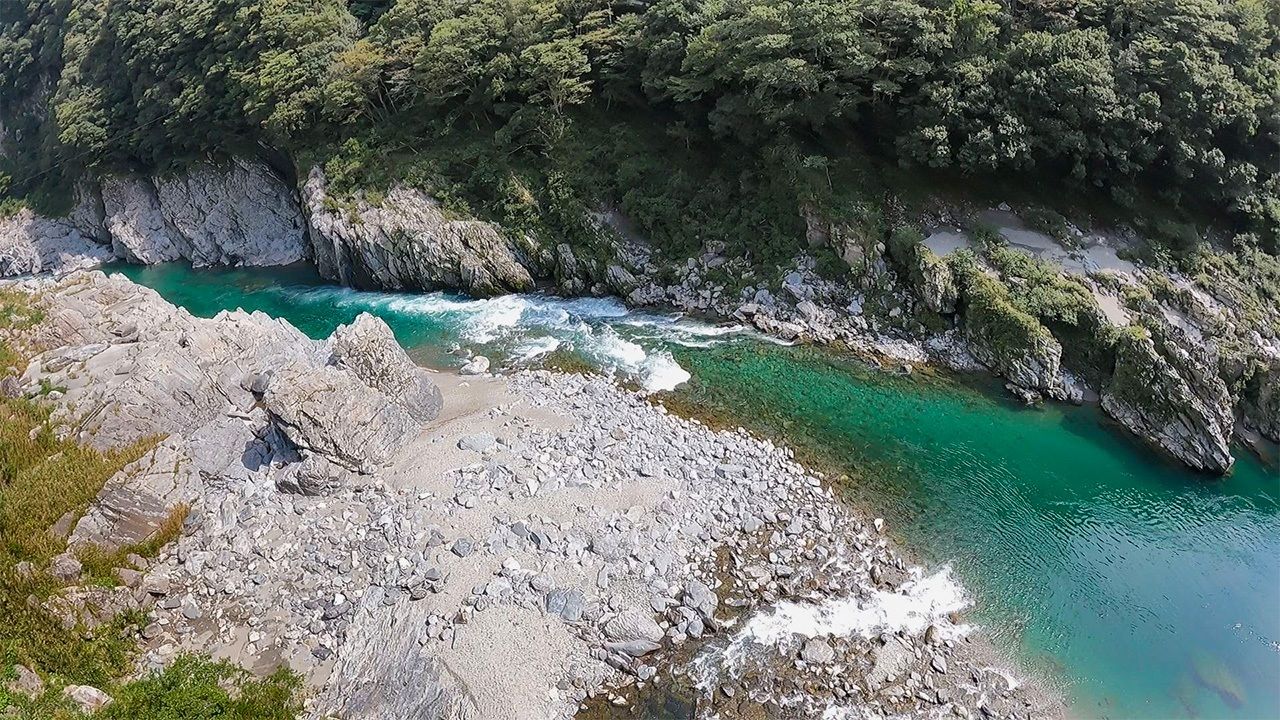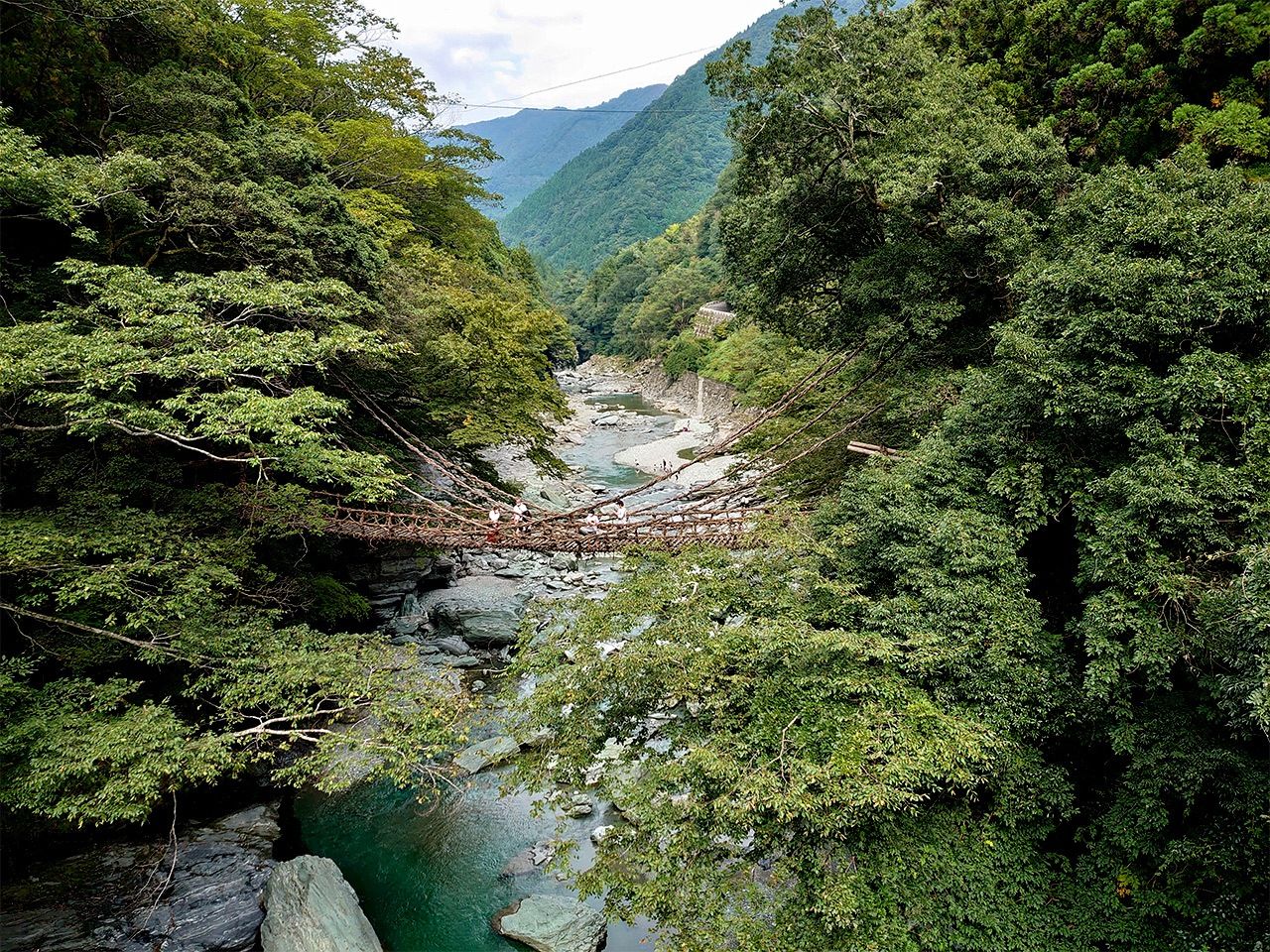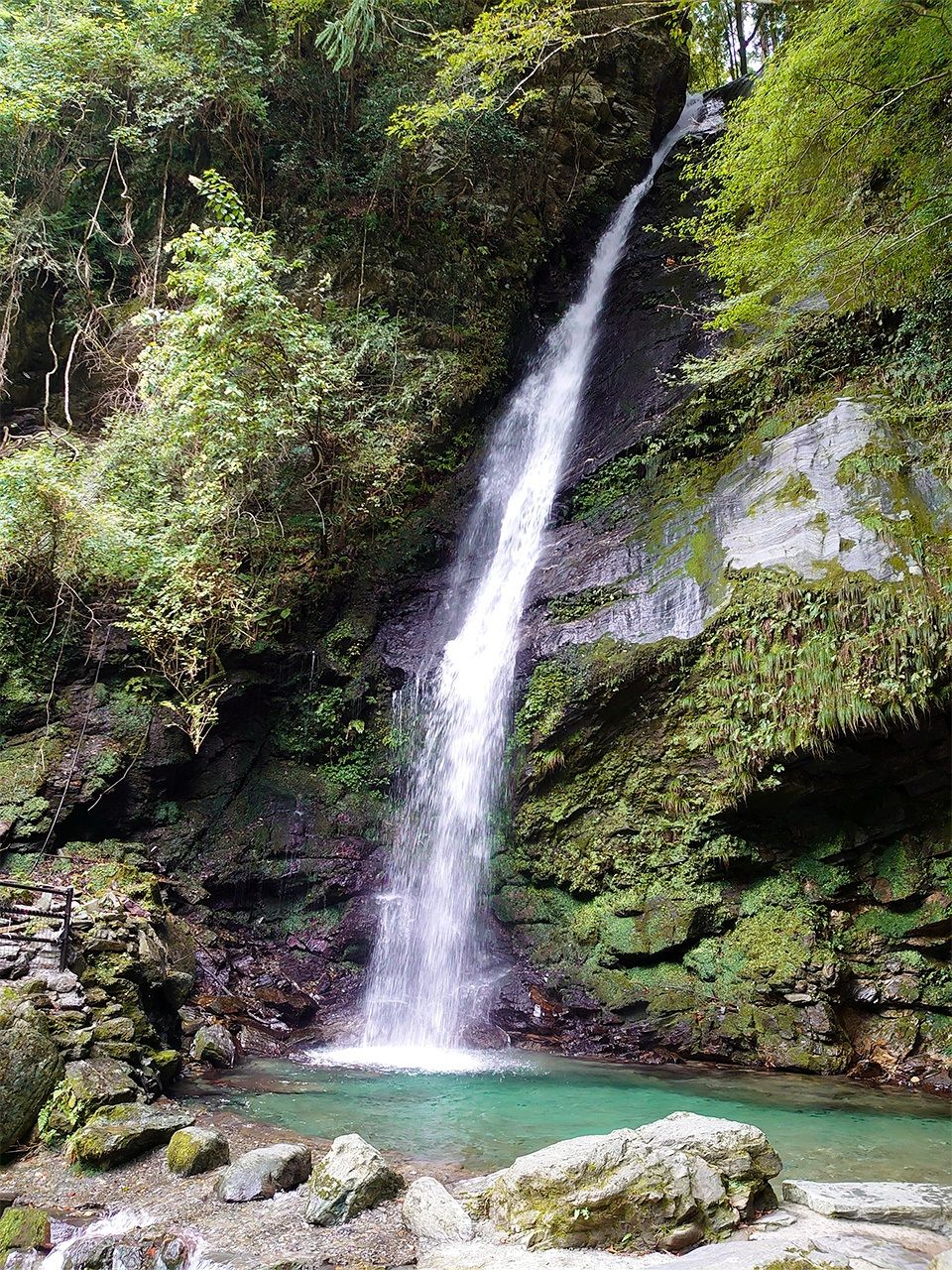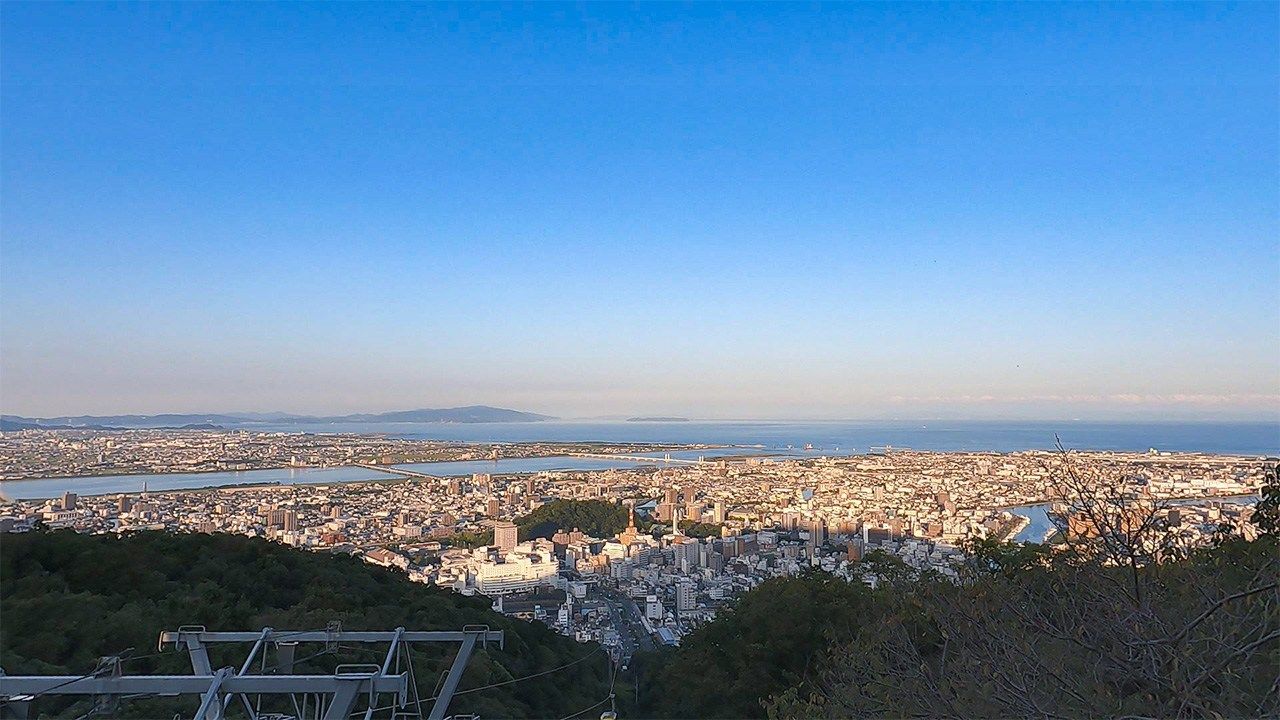
Secluded Shikoku: Hidden Beauty of the Iya Valley
Travel- English
- 日本語
- 简体字
- 繁體字
- Français
- Español
- العربية
- Русский
Loneliness of Pandemic Travel
I stepped out of Tokushima Awaodori Airport into darkness.
The small airport had been almost deserted, with only one of the three baggage claim areas in use. The plane that brought me was not even half full. It was certainly comfortable, as a traveler, but it also demonstrated the strangling effects of the pandemic.
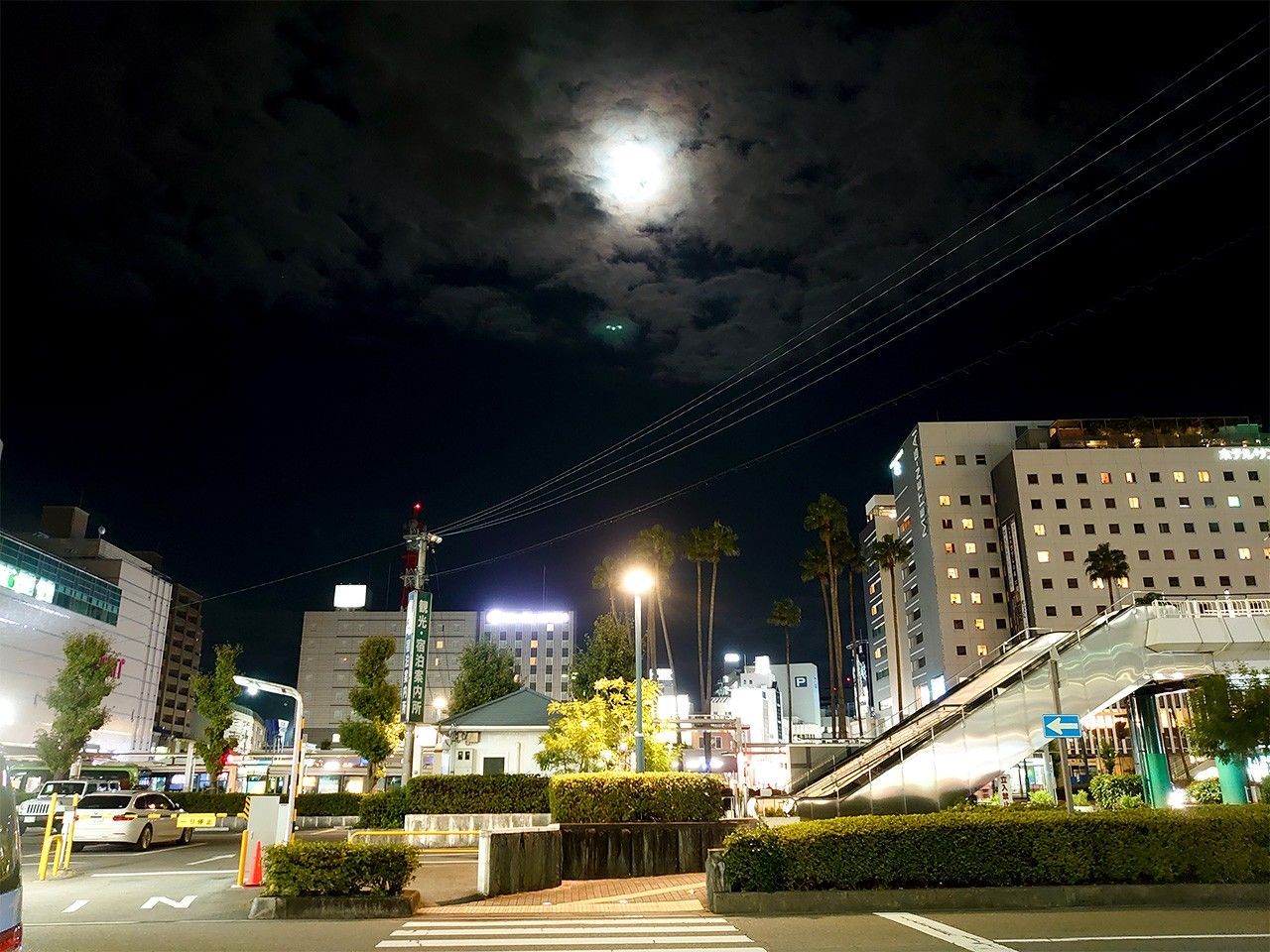
The quiet street in front of Tokushima station under the cloud-covered full moon.
I bought a bus ticket from a machine and headed to Tokushima Station. The airport only serves domestic routes, and few of them at that. That means the local buses can be timed to meet arrivals, so there was no wait at all. The few other passengers were all masked, hiding their expressions. A monitor at the front of the bus ran videos teaching proper hand-washing techniques.
It was my first experience of Shikoku. When I first came to Japan at age 16, my destination had been Kyūshū, and after that I had visited the main island of Honshū, then Hokkaidō, and Okinawa, leaving only Shikoku unseen. I had long wanted to change that, and the wish finally came true in October 2020.
Shikoku’s primary claim to fame is its henro pilgrimage, but a walking tour of 88 holy sites is a bit of a reach for a first-timer. An Internet search offered up week-long guided tours covering all of Shikoku by train, but that kind of rush did not appeal to me, so on a whim, I thought I would start with a week touring the two easternmost of Shikoku’s four prefectures, Tokushima and Kagawa.
When I got to Tokushima Station, the sky was completely dark. The area in front of the station, and the station itself, were clear of people. Neon lights dyed the night with color. The only activity was an occasional passing car or arriving bus. I cannot say if it was simply a weeknight, or the influence of the pandemic, but the commercial street in front of the station was lined with shuttered shops and devoid of pedestrians. The faintly blue night sky was striped with smoke-like wisps of clouds, and there was a bright halo around the moon, which was shining coldly through. The lovely full moon reminded me that it was Tsukimi, or the Mid-Autumn Festival. The date is celebrated all over East Asia, and is a time when people gather to gaze at the moon, and eat mooncakes in Chinese-speaking areas, but here I was, traveling alone in an unknown place.
Pandemic travel is a lonely thing. The risk of infection can never be eliminated, no matter the masks or hand washing. I avoided conversation and human contact to reduce the risk even just a little. When I absolutely had to speak, like at hotel check-in or shopping, I kept it to the bare minimum, and even tried to stick to body language whenever possible. I wanted to avoid sending out any droplets. I kept away from crowds. I nervously evaded people whenever they approached, and of course I never approached anyone on my own.
The trip was completely solitary as I sat silently on trains looking at the scenery, or reading signposts and taking pictures at my destinations. I had no hope of the kind of serendipitous encounters that might add some conversational flavor to my eventual travel essay.
Release from Stay-At-Home Life
Still, after over six months cooped up at home, with all my meetings, interviews, and lectures moved online, I was grateful for any chance to travel. The past six months had seen me alone in my apartment, going out only to the drugstore or grocery store, and my body and mind thirsted for warm sunlight scents, deep green forests, the wide ocean, and flowing rivers. With the government pouring tax money into the Go To campaign to get people to travel, I saw no reason not to take advantage.
I was finally able to satisfy the craving that filled me body and soul in the Iya area of Tokushima Prefecture, considered one of Japan’s three most secluded regions. These groups of three are always kind of dubious, since no one seems to know who chose them, or how, but for this trip I put my doubts aside.
The region truly is beautiful. The Yoshinogawa river, one of Shikoku’s longest, formed the Tokushima Plain through sedimentation. The plain is shaped like a “<” with the city of Tokushima at the mouth of the river in the most open part of the “<.” Taking a train for an hour and a half west toward the point from Tokushima Station will get you to Ōboke Station. The view from the train windows starts out grand, with a view of rice-paddy dotted plains, but becomes truly spectacular as the scenery changes to rolling mountains and then suddenly reveals a green mountain stream. The signs of human settlement fall behind as you go deeper into the mountains. When you alight from the train, the station platform is flanked on both sides by overlapping green mountains stretching out to the horizon under cloudy skies. You can see solitary houses and shops dotting the mountainsides. As I gazed around the scenery and breathed in a lungful of the cool, fresh air, I could feel my heart being washed clean, and the darkness accumulated through months of staying at home began to fade.
The name Ōboke is used for the valley and the surrounding area on the river, while the valley itself is called Ōboke Gorge. The rushing river carved it in the landscape over millions of years, and now cliffs stand along both sides, lined with boulders carved into mysterious shapes by the water. There is also a sightseeing cruise that has been sailing the river for over a century, so I decided to take a ride.
A Spectacular Bridge
The boat dock is about a 25-minute walk from Ōboke Station, and while there is a bus, it runs fairly infrequently. I decided to walk. There is a pre-boarding form to fill out at the ticket office, and under “nationality” I went ahead and wrote Taiwan. Then, the staff handed me a Chinese-language pamphlet and started speaking in incomprehensible Hokkien. I tried to say that Japanese was fine, but it did not seem to get through, and so the confusion continued. I imagine they were simply trying to offer some hospitality to a rare non-Japanese guest amid the huge fall in foreign tourists from the pandemic, but I wish they had just used Japanese like with anyone else.
The stairs from the ticket office led directly down to the boat dock at the bottom of the gorge. According to the boat pilot, the cliffs lining Ōboke Gorge are a rare pebbly schist formed some 200 million years ago on the ocean floor, and are highly valuable to geological science. I did not really understand all the details. When I looked closely, though, I saw that the stone actually contained beautiful, regular crystalline formations.
The dark green river is not so fast, with a murmur that soothes the ears, and a close look revealed fish swimming beneath the surface. The boat floated gently downstream, then made a U-turn to return upstream to the dock.
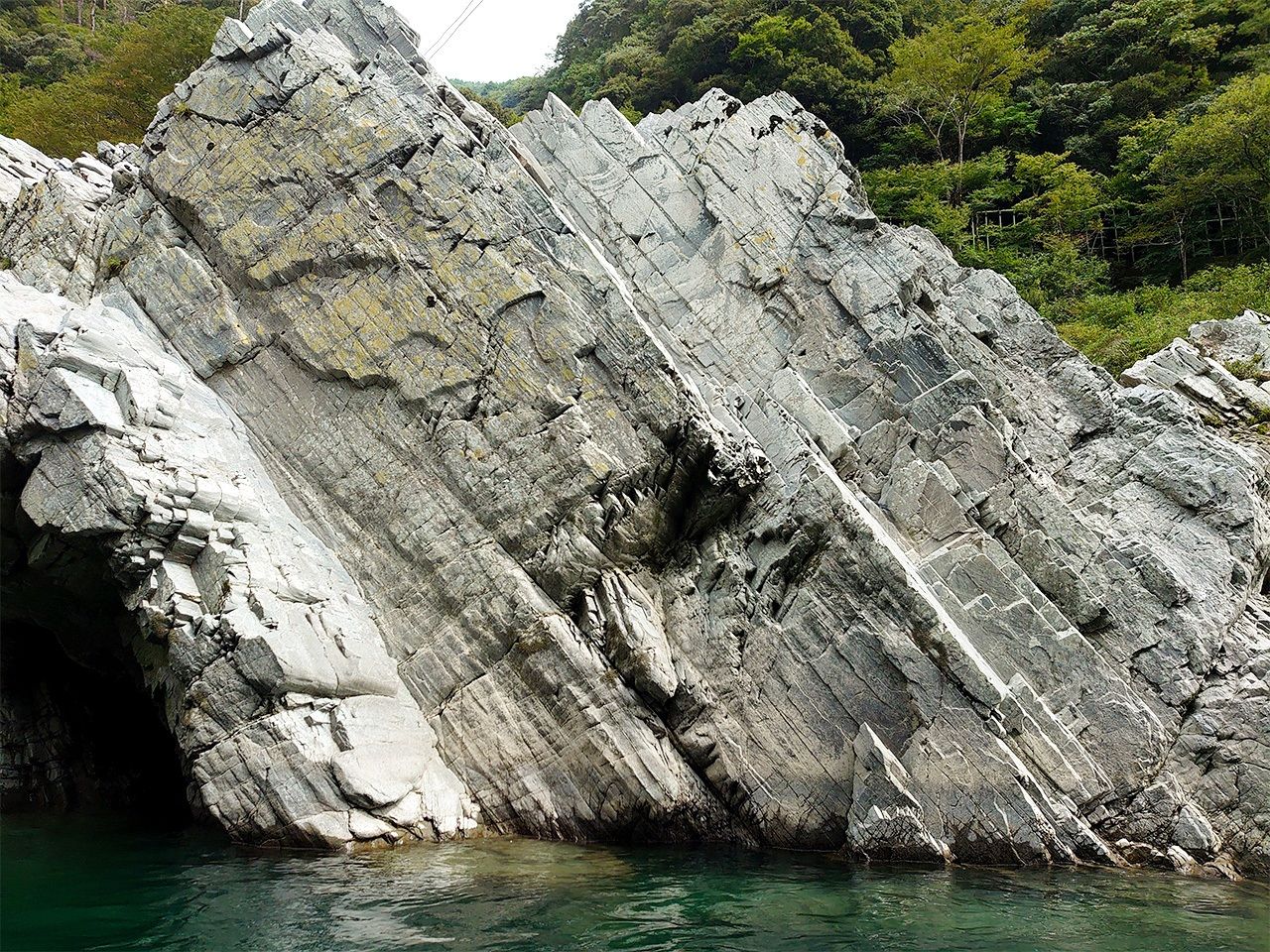
The schist stone lining both sides of Ōboke Gorge.
I left the boat dock and then took a bus to Iya no Kazura Bridge. The ride is 40 minutes, so walking was out of the question. There are only eight buses a day on this route, and it follows winding mountain roads lined with scenery that switches between rocky cliffs and coniferous forest. I could not imagine ever making this trip without the bus. It stopped at a few hot spring ryokan inns along the way. I couldn’t help but idly imagine what it would be like to be stuck in one of these remote mountain ryokan writing a novel.
Iya no Kazura Bridge is a suspension bridge woven from kazura vines that stretches for 45 meters over the Iwa river valley, connecting both sides with a span of wooden slats. The wide gaps between the slats offer a direct view of the valley floor, making for quite a thrilling crossing. There is no safety net below, and the riverbed at the bottom is lined with massive boulders, so if you fall, there is no chance at all of being saved. Everyone who crosses holds fast to the railing, and takes slow, careful steps.
This is one of Japan’s Three Most Unusual Bridges, or another member of one of those trios. It was presumably first put up to connect mountain villages separated by the gorge, but no one knows just who built it or when. There are legends, including one that says it was Taira refugees who came to live in hiding after they lost the Genpei war to the Minamoto in 1185, and another that says the famous monk Kūkai (774–835) built it for local residents. Now, I hear the bridge is replaced every three years for safety.
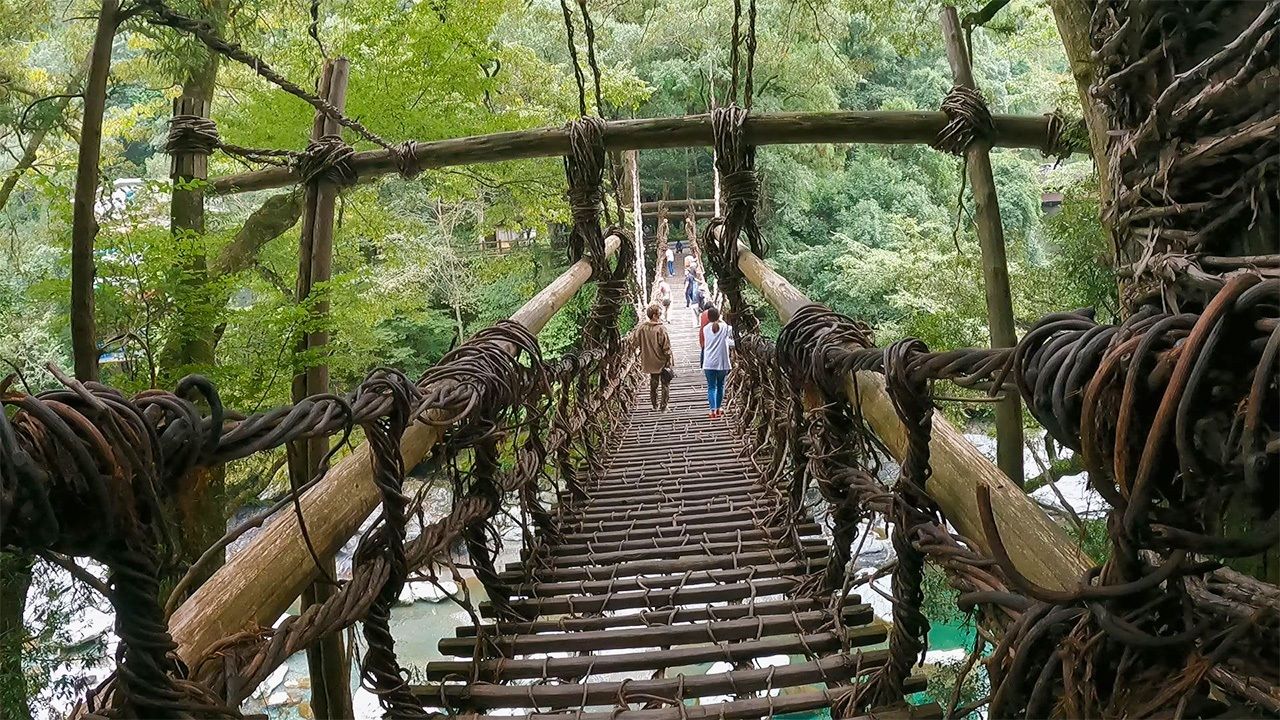
The view when crossing Iya no Kazura Bridge.
Melancholy Biwa Falls
There is a waterfall called Biwanotaki just a few minutes’ walk from the bridge. I do not really understand it myself, but something in me finds solace in waterfalls, so whenever I learn there is one near a travel destination, I want to visit it. For some reason, I enjoy watching the pure white, silky torrent give off mist as it rushes over the falls with a roar. I mean, in flat terms it is simply river water falling due to a difference in elevation, but where is the fun in that? I was not the only one staring into the water when I was there, though. There were several other sightseers enjoying the sight and taking pictures.
Long ago, the Chinese poet Li Bai (701-762) wrote a famous poem about gazing at a waterfall on Mount Lushan: “Water plunges down three thousand feet. Could the Milky Way be spilling from the heavens?” Biwanotaki is not nearly so grand as to make you think of the Milky Way falling, but it does have its own legend. After the Taira clan lost the Genpei War, many fled to Iya to live in this wilderness. They would come and play the biwa lute to comfort each other and think back on their luxurious life in the capitol. That is where the waterfall gets its name. This is, of course, a legend rather than any real history, but knowing it gives the scenery a sense of melancholy. The scent of mitarashi dango, rice dumpling skewers covered in sweet soy sauce, wafted from a nearby wooden house.
Of course, this region has been called secluded because of its isolation and inconvenient access, but now the roads have improved, and buses are running. Sightseers can come and drop in at souvenir shops and eateries along the way. Does the word still fit? If it were truly secluded, a secret from everyone, there would be no way for me to be here.
However, I cannot drive, I know nothing about wilderness survival, and now with the pandemic my foreign travel wishes are beyond reach. With all that, perhaps the most truly secluded place within reach is right here, at Iya in Tokushima.
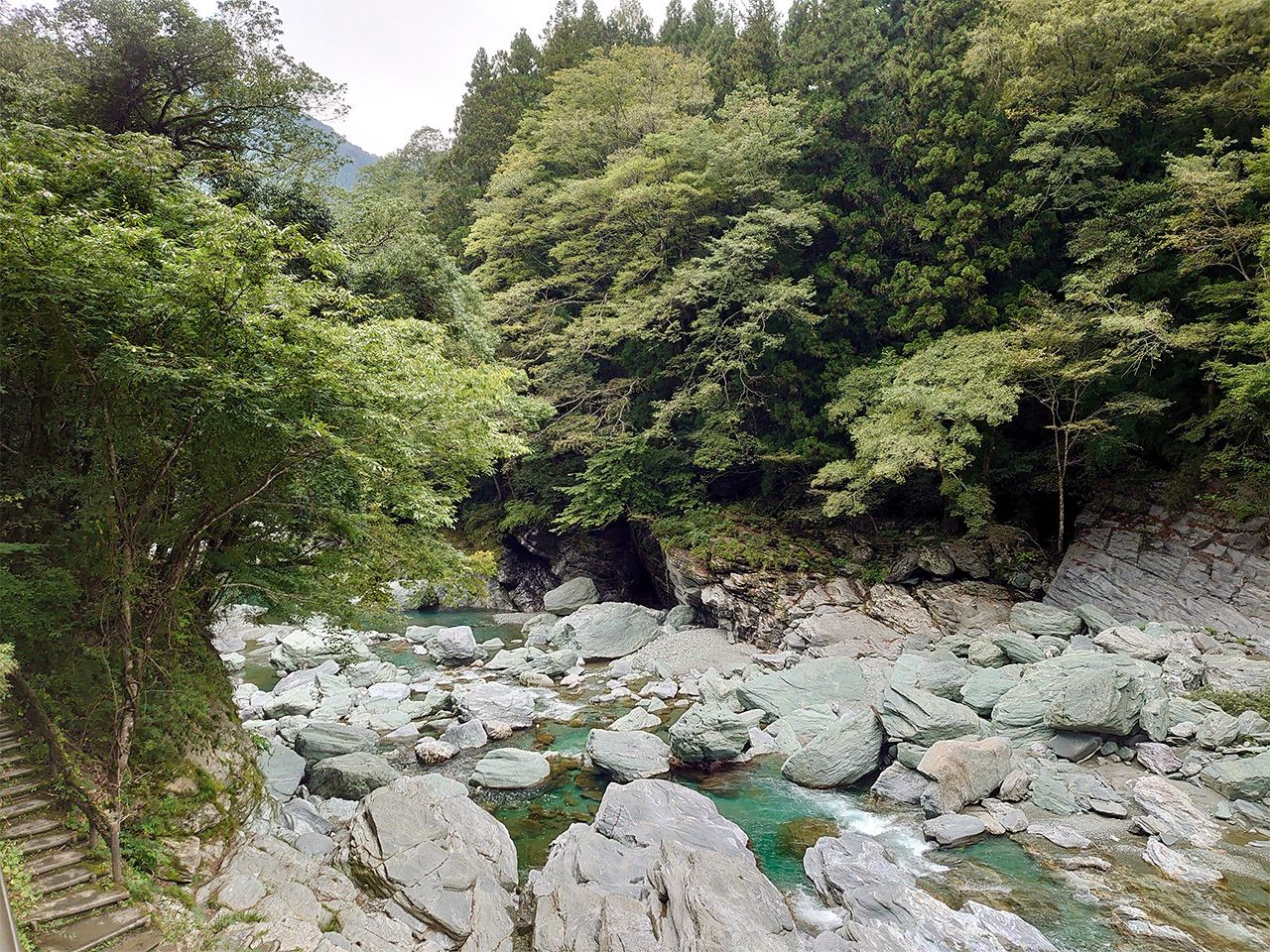
The river bottom below Iya no Kazura Bridge.
As I walked, I suddenly wanted to send myself a postcard, something I always do when I travel. I tracked down a mailbox, and I bought a postcard at a souvenir shop, but I did not have a stamp. Naturally, there were no convenience stores, and none of the other shops sold them. I could have posted it once I got back to the city, but I wanted the Iya postmark. I had no choice but to scrawl my address crouched on the side of the road and drop it in the mailbox unstamped. It actually did arrive, a few days later. I had to pay \63 at the post office to get it.
When I stumbled on tired feet back to Tokushima Station, it was evening once again. I could see the silver moon hanging in the same cloudy sky. It had waned somewhat since I arrived in Tokushima.
(Originally published in Japanese. Banner Photo: A view of the city of Tokushima taken from Mount Bizan. All photos © Li Kotomi.)
